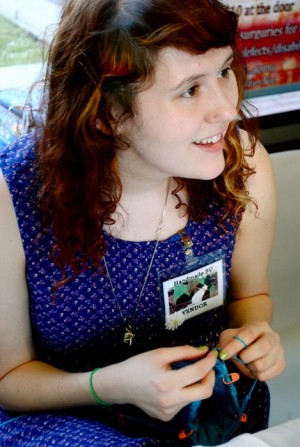Hi. My name is Amalie. I’m new here.
When I first transferred to this enormous campus we call home, the sheer number of people striding down Commonwealth Avenue overwhelmed me. After some time on campus, I adjusted. I started spotting familiar faces, and relaxed into my new routine. One day I realized, however, that I was only paying attention to the familiar faces. The foreign faces—the unknown faces— had become unimportant. This is my effort to right that wrong impression. BU is not a crowd of strangers, it is a community of individuals. This campus is not just a huge stretch of land, it is a buzzing hive of opportunity. And so, I set out to get to know a few of those individuals, and maybe expose some of that hidden opportunity on the way.
This is the first in a series of BU Stories. For every issue, I will go to a different story of a BU building and interview someone who works or studies there—hear his or her story. This week, I started at the very beginning, Story 0. I started in the basement of the George Sherman Union, at the Women’s Resource Center (WRC). I spoke with Ariana Katz, one of the two co-directors of the WRC, about the power of stories.

Amalie: Why do you think stories are important?
Ariana: There’s serious power in a narrative. It can control the way people think—in a good way or in an evil way.
What is an important story you’ve told?
I talk about the loss of my grandmother a lot, actually. And I’ve found that that’s a really powerful thing. I lost her—well, she died, I didn’t lose her in a supermarket—in February of 2009, while I was at school, and the way I experienced that loss was really powerful.
What part do you think storytelling has in dealing with grief and loss?
There’s a loneliness that’s really unique to grief, because you feel that the feelings you’re feeling are wrong and completely out of control. Knowing that other people are feeling just as out of control and feeling what a unique experience that is to them in their life—it really grounds you. Connecting to someone on a deep level is easily facilitated by telling a story, so when I talk to people about grief and loss, that story is really something I’ve drawn on.
Not all stories are about words. How do you tell stories?
I love this thing about silence—you can learn a lot about a person by sitting quietly with them. Sitting next to someone in silence is a wonderful thing. I’ve met people for the first time and just sat in quiet with them and while that feels awkward, sometimes it feels really good to pick up on that. I wish that my answer could have been, “I weave epic tapestries.” Maybe someday. Until then I’m stuck knitting hats.
What brought you to knitting?
I was watching the Superbowl with my mother and I asked her to teach me how to knit. Making things is just a part of my family. It’s slow, it’s patient, it’s kind of domestic. I like the dissonance of my politics and what the act is. That’s something that’s been fun to explore.
What is the most difficult thing you’ve knitted?

I made this blanket out of granny squares—it’s crazy colored and patch worked and bonkers. I made with my grandmother and all of her friends. The granny square is just a stitch you do with a crochet hook. I just had huge piles of squares lying around and I sewed them into a blanket that’s all crazy and mismatched. I wrote my college essay about it, and it got me into college, so that’s cool. The essay was about how this blanket is going to follow me throughout my whole life, and I know where every piece of yarn came from, I know who I was sitting next to when I made a lot of the squares. It’s something you keep with you.
What is BU’s story?
BU has a couple of stories. A lot of them are lost, and a lot of them we’re working to find, and a lot of them have been dug up and presented to us nice and shiny on glossy paper with a letterhead. There’s the story of the school, founded 1839, very important, yada yada. And there’s the stories that have shaped lots of people’s lives that aren’t publicized because they’re not polished. I like the dirty stories. I like the grungy ones that are full of crying, for good and bad. Because we’re so big, BU does have multiple stories, and that means that knowing our narrative means knowing a lot of narratives. And that’s good. It means a diversity of voices.
How would you influence the narrative, the story of BU?
I would say dig a little deeper. Ask your neighbor a question. Ask questions of your school. Ask where you’re spending your money, where you’re spending your time. Look at that on a deeper level. I’m just gonna come and go, but I hope the work I did here inspires someone else to inspire someone. That’s all.
The Women’s Resource Center is located in the basement of the George Sherman Union. It is a comfortable, welcoming place with warm walls and comfy couches. Every Friday the center provides free bagels to all and sundry. Stop by and to check out the library or just to chat with the many fascinating people that congregate this little island of peace among BU’s hustle and bustle. Find out more about the WRC’s upcoming events here.

